A recent series of written questions tabled in Parliament has revealed key details about the Gravehawk air defence system, which was “rapidly developed for the Armed Forces of Ukraine and jointly funded by the United Kingdom and Denmark,” according to statements by Parliamentary Under-Secretary of State for Defence, Luke Pollard.
The system, designed to enhance Ukrainian air defence capabilities, has been funded in two stages. In response to a query by James Cartlidge, Conservative MP for South Suffolk, Mr Pollard indicated that the “price of designing, producing and delivering the first two Gravehawk prototype systems was circa £6 million and borne by the UK.”
He went on to say that the subsequent purchase of 15 additional Gravehawk systems, “is circa £14 million, which is split 50:50 between the UK and Denmark.” As a result, “the UK’s financial contribution to the Gravehawk project is circa £13 million,” covering both the prototypes and half the cost of the follow-on batch.
In a second question from Mr Cartlidge, Mr Pollard also addressed the project’s operational status, confirming that “Gravehawk has now reached minimum deployable capability,” with two prototype systems “handed over to the Armed Forces of Ukraine.” The decision regarding “when to deploy this capability” will rest with Ukrainian commanders based on their strategic and tactical requirements.
According to official statements, the system was specifically tailored to address Ukraine’s immediate air defence needs, reflecting the growing emphasis on multinational defence partnerships in responding to evolving security challenges in the region.


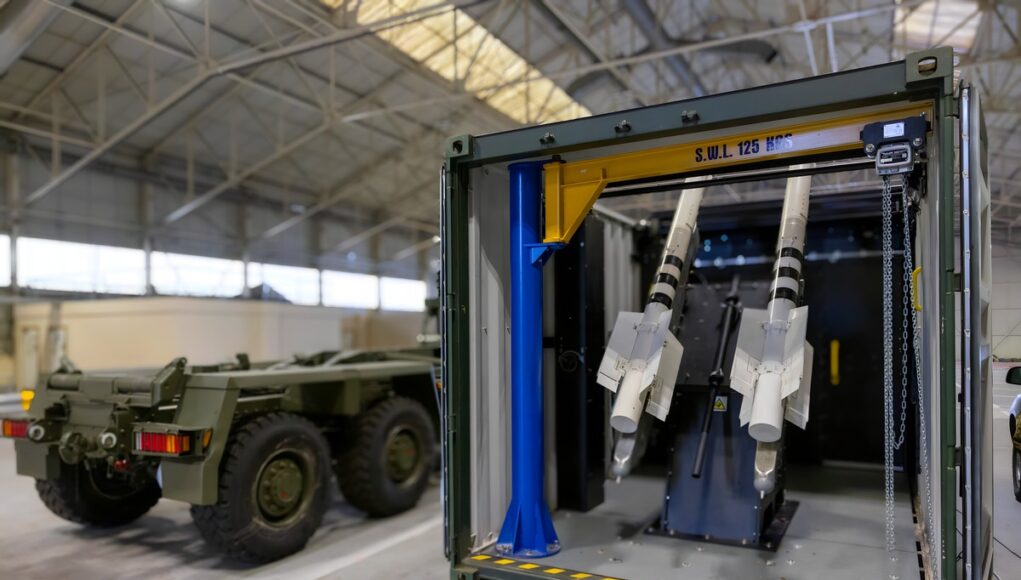
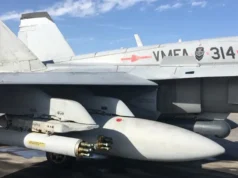

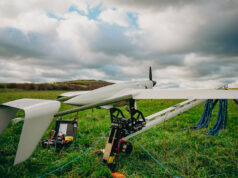
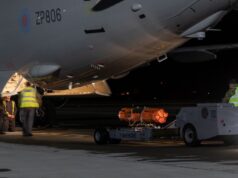
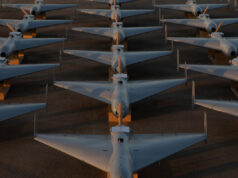
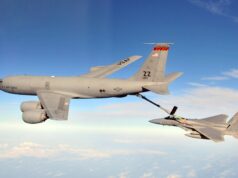
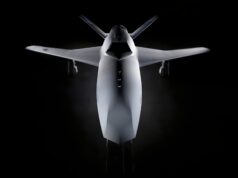

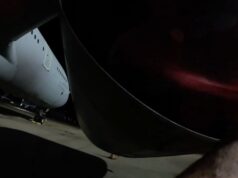
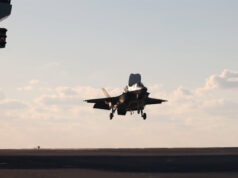

Why dont we use these ourselves with our own missiles?
Good point and a possible hint from the UK Goverrtnment about the outcomes from the new Defence Review 2025, that the UK air defence will be reviewed and findings acted upon.
Enough to defend the territory of Ukraine, Denmark & the UK (and Allies) and it’s assets and triple it.
When you’re not rushing things out during wartime, there are huge amounts to regulations, trials, tests and evaluations etc to do before something is certified as “this will work 100% of the time when i need it to shoot down a missile in a warzone, and it won’t accidentally kill my own troops”.
A very good summary!
That said it is, presumably, a good example of pairing an EO/IR sensor with an agnostic software system to control a missile.
It also show a total understanding of how the ex Soviet missile works to integrate it.
This won’t be at the level of Sky Sabre but it will be a nasty surprise for any battlefield helicopters or low flying gets or even to take out large drones and glide bombs.
Not bespoke or expensive enough.
They are a very limited system primarily for anti drone use, not what we need for UK air defense which needs to counter cruise missiles and ballistic missiles.
I would say we do need that, we need cheap systems to take out cheap threats. We needed a layered system, and something like this would seem to be part of the solution. We needed high end expensive systems to take out cruise and ballistic missiles .No point having those if they get taken out by a swarm of cheap drones
Aren’t they fundamentally cheap because they are using Soviet era air to air missiles of which Ukraine has large stocks and little opportunity to use in their traditional role. Wouldn’t be so cheap if they are using ASRAAMs for example like previous systems we have supplied and one presumes those have lent experience to the creation of Gravehawk. Fact is however unlike this system, ASRAAMs are not a cheap missile nor underused in their more traditional role, so while it might contribute to a UK system at some point it’s not the ideal answer to taking out cheap drones. Indeed as it’s the base missile for the development of CAMM, that puts its overkill credentials into perspective. Watching the RAF (presumably) employ them on tv against Iranian drones was a little painful when you realise they took out 3 (did one miss) of hundreds launched (so token really) revealing just how expensive a business serious defence would be. While there is room for such a land based system as part of a layered system something like, laser, microwave/electronic, and guided cannon seem better fits for the low end threats.
Just as there is use for ASTER there is use for CAMM and use for something even cheaper long range.
I totally agree with you have cannon do have a very valid use for defending fixed targets like are fields against saturation drone attacks as have microwave/laser etc. I’m in favour of cannon because of the ability to stockpile and fat manufacture reloads.
Because we are not sharing a border with Russia perhaps ? Think about it, these are short range, Russia is far away.
Im not convinced that this system is that useful. For ukraine sure anything is better than nothing.
Air launched missiles rely on being air launched to give them the legs, launching from the ground will use a lot of the fuel before it even gets to height, meaning its range will be extremely limited.
Additionally IR tracking needs targets to be fairly close to get a realistic lock as otherwise the target is too small and fast moving to acurately target.
Potentially great against slower moving drones, but now that we are seeing drone swarms involving 100s of drones, is 2 missiles really going to add much to the equation.
I think its an interesting proof of concept, but needs some work before its ready to be deployed by the UK, especailly as we lack layered air defence. This would basically be the last line of defence, which is where stormer currently fits in.
Wow how much in designing a shipping container with an opening roof?
Lol….and open top or lidded containers in themselves can’t be that expensive unless it’s some super high grade. I’m curious about the reloading mechanism for this system, if it slides out on rails or something? And if they go with a 40′ could they get a 4 missiles setup inside?
Only just seen the blue and yellow chain hoist device here. Looks very basic but it must work for loading and reloading.
Wonder now if they can take this sysyem further and create a 20’/40′ ‘containerised CAMM/ASRAAM and maybe even Starstreak and LMM ER and even as previously suggested Meteor?
Or Aster 30, perhaps?
Well why not? If they can fit 8 Aster 30s on the back of a SAMP/T truck it should fit into a container.
Aster 30 is designed for vertical launch and each missile is about 5m long, so you’d definitely need some kind of transporter-erector-launcher system rather than just putting in a container where they’re in launch position at all times
Yes, true, but should be doable though cumbersome with the extra weight of the container. Just for contrast the US has built the Thyphon containerised TLAM system which looks an absolute monster but is deployable on the deck of their LCS types. The Israelis also have several Dome, decoy, loitering munition containerised type platform systems which look quite innovative.
Unless air defences can cope locally with drones then our forces are toast
They are, but nato appraoch is mobility warfare, this type of system would be useless. There is a need for something like a boxer module that has potentially an airburst cannon combined with something like marlet, spike or brimestone missiles.
Batch 2 River upgrade?
Unlikely given we don’t have a huge stock of Soviet era air-to-air missiles… 🤦🏻♂️
It was originally designed for ASRAAM. I would post link but it would take a week or so to get approved.
Ukraine Uses British ASRAAM Missiles on Supacat Truck to Down Russian Kamikaze Drones
12 Oct, 2023 – 14:38Russia Ukraine War source: Army Recognition
Yes I’m sure Gravehawk was inspired by that and mainly due to an excess of Soviet missiles over ASRAAMs and the reduced costs and increased availability as a result for Ukraine. As CAMM came out of ASRAAM one would have to assess relative cost development/operational use profile for the two systems if this was to become a uk operated solution. As I say elsewhere would you want to, in a planned environment rather than emergency, adopt a ASRAAM based system over Cannon/Laser/Electromagnetic systems if you have time to get them operational.
Oh, yeh. I forgot that…🙄
OK why the hell can the Uk government develop, produce and deploy a short range area air defence system for 6 million pounds and then build the system for less than 1 million a unit and yet the British army with a budget of 3 billion pounds ( 3000 million ) and spent 660million on development and 6 purchasing sky sabre units….
(James Cartlidge | Ministry of Defence Defence answer to question on the cost of army sky sabre system: has invested over £660 million in the Sky Sabre air defence system. This includes sensors, command and control software, launchers and missiles)
So:
gravehawk 1.25 million per unit
Sky sabre 110 million per unit
Is each sky sabre system costs 100 times more that a grave hawk..now clearly sky sabre is a far better system than grave hawk but is it 100 times better ?
Testing and qualification are a massive part of why military systems cost so much. That sort of thing can be much reduced when there’s a critical battlefield need, such as in Ukraine right now, because in a war you’d rather have a 90% confidence system than no system at all, but that last 10% confidence is the exponentially expensive part.
Also, something like sky sabre is a lot more than just a launcher, which is what grave hawk appears to be. If we had a breakdown of sky sabre component systems it seems fairly likely that the launcher would be the cheap part, compared with the missiles, the sensors, and all the control systems that link it all together.
I think Gravehawk is a lashed together point defence system; Sky Sabre is more of a wide area system.
It is. Also the Soviet era missiles to be used are to put it bluntly. Crap.
Actually the R-73 is not considered a crap missile at all. Yes it’s dated but it was Found to be more effective than the 1990s sidewinder…. It was one of those little surprises that the west got after the fall of the wall and it got a lot of soviet equipment in nato forces….
Yes we do have to put things in perspective. The ASRAAM system had pretty basic Radar/Optical sensors in its own right though one presumes it can exploit pre existing Ukranian systems. This I presume works in a similar fashion (maybe even more basic) so with Soviet missiles even cheaper to produce and operate.
If you exploit ASRAAM most of the cost pre existed in its sensor development long ago as that was mostly what’s used in its set up sent to Ukraine whereas Sky Sabre though it took that base missile as it’s start point, then not only redesigned it substantially but added all the external support set up to make it a true area defence system with far superior overall capabilities. Whether that truly accounts for the substantial difference in costs can’t say, but adds serious nuance to the argument certainly.
As Pete says this was a system they were putting together for both soviet missiles and asraam… we have a ton of asraam sort range area defence over point defence, 15km range..
The thing is we could easily build a Gravehawk like system using asraam missiles that we have a lot of. GBAD like anything requires mass and if all we are building is high cost systems we will not have mass.. at preset the British army does not of have the combat support it requires..something like this Gravehawk should be available for any battalion battlegroup deployment as part of a brigade’s CS.
The only consolation I guess is that if it came to an emergency a basic ASRAAM based system could be churned out pretty quickly and in decent numbers on various platforms with what’s already been learned in Ukraine.
However despite all the West’s contributions, Russia has taken huge swathe’s of land, I’m pretty much convinced that all of the West’s aid has only been able to stop the creep at best. If Tango man and Vag get their way, An awful lot of deaths will have been in vain. Same as Afghanistan really.
Having each Gravehawk system spread out across the front line will be a big help as part of a layered defence
Designed to launch R-73 air-to-air missiles
Speeds of up to Mach 2.5 and engage targets at a range of approximately 12 miles
Electro-optical and infrared targeting cameras, remote operation so that operators can fire missiles from a safe distance
The project was completed in just 12 months at a total cost of $7.5 million, with each unit costing approximately $1.2 million
2 Gravehawk units have already been shipped to Ukraine and are in active use, with 15 more scheduled for delivery throughout the year
Its a great idea with room for improvements
Why cant we be quick enough to do this sort of thing for our own Army..
Being at War tends to focus minds and cut through Red Tape – look at what the Vulcan achieved during the Falklands conflict with its extra ‘enhancements’ that would never have been enabled during peacetime.
We can expect a big uptick in GBAD capabilities I think from SDSR. Hopefully an integrated layered air defence system with Aster 30s/15s, Land Ceptor and then radar guided guns and finally direct energy weapons and ECM/ ECCM.
France are somewhat ahead and building reasonable numbers of light systems optimised for anti drone work based on 4×4 chassis.
It’s interesting Zelensky alluded to Ukraine using so far 1.5 million suicide, First person attack and loitering munitions since the war begun. That’s a huge number of cheap drones that on their own won’t due much damage but deployed in hundreds or thousands could overwhelm a missile based air defence system like land Ceptor that is intended to counter attack helicopters and fast jets/ close air support.
Direct energy weapons and guns are the cheapest way of countering.